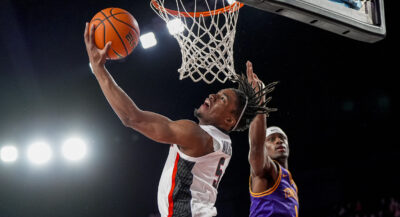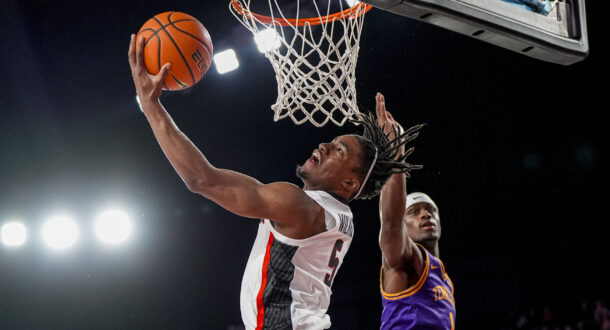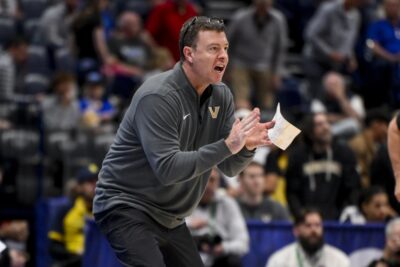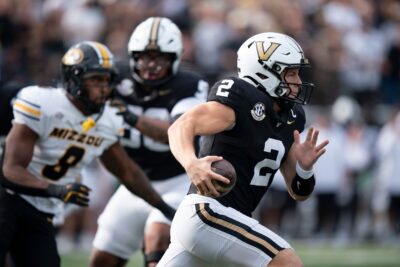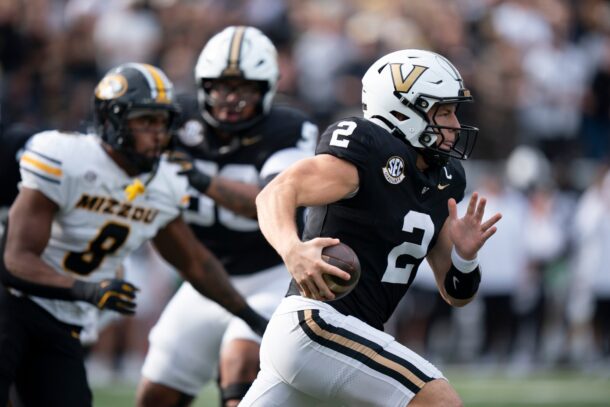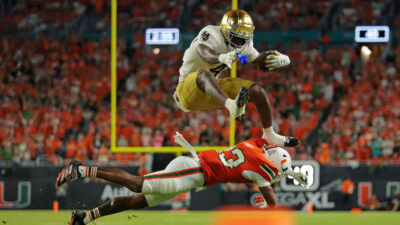
Editor’s note: After previewing every SEC East defense last week, this is the 6th in a series on the SEC West. Coming Sunday: Texas A&M
Mercifully, the page has turned for the Ole Miss defense after a horrific 2018 season. Just how bad was it? Well, they finished last or second to last in the SEC in passing yards per game (261.7), rushing (220.8), yards per carry (5.1), first downs (25.3), total yards (482.5) and scoring defense (36.2).
Needless to say, coordinator Wesley McGriff was shown the door, and HC Matt Luke made a huge upgrade by bringing in 2016 AP Coach of the Year Mike MacIntyre, who was fired from Colorado just 2 years after going 10-4 and winning the Pac-12 South.
The Rebels are bringing back 11 of their top 12 tacklers from last year, and will also be bringing back their best cover corner in Jaylon Jones (who went down in Week 1 with a torn ACL), all while transitioning to a 3-4 defense. But does this mean they’ll actually be any better?
Let’s find out.
Pressuring the QB: Better
The Rebs have to be better getting after the QB, simply because – and this is going to be a repetitive phrase when talking about the defense – it can’t get much worse. They finished with 22 sacks last year, averaging 1.83 sacks per game, tied for 90th in the country.
That number becomes even more nightmarish, however, when you factor in that a whopping 7 of those sacks came in the Week 4 win over Kent State. Take away that game and they averaged just 1.25 sacks a game, which, you guessed it, would be last in the SEC.
The move to the 3-4 front should be beneficial in this regard, because it will allow them to put more pass rushers on the field at once. It’ll also give them the ability to provide different looks (i.e. showing and faking different pressures and coverages), which should theoretically allow for more pressure opportunities.
There are high expectations for Qaadir Sheppard, who has always been somewhat out of place as a 4-3 DE, to really come into his own as a 3-4 OLB. Also, 4-star signee Sam Williams, ranked as the No. 8 JUCO prospect nationally after racking up 17.5 sacks at Northeast MS CC last year, is expected to make a big impact this fall.
Run defense: Better
Similarly to pressuring the QB, it’s hard to imagine a scenario where the Rebels are worse against the run in 2019, after bottoming out last year. Certainly, it helps that the vast majority of their front 7 return, but an even bigger factor is superior coaching. Not just schematically, but fundamentally.
There’s no denying the talent gap between the Rebels’ defense and the rest of the SEC last year, but poor fundamentals – which are a direct reflection of coaching – were simply maddening, whether it was the run fits, pursuit angles, missed tackles, poor reads, etc. The talent gap is slightly improved this year, but more important, they should finally be playing (more) disciplined and fundamentally sound defense under MacIntyre, who tore the unit down to the studs (literally and metaphorically) this offseason.
Seniors Benito Jones and Josiah Coatney should be natural 2-gappers who can play the 5 or head up on the nose, and will again be counted on for veteran leadership. ILB Mohamed Sanogo, who has never possessed prototypical sideline-to-sideline speed, should be very well suited in the new scheme, where his strength to play the run between the tackles can be highlighted. There’s a good chance he equals or betters his team leading 112 tackles from last year.
Passing defense: Better
The pass defense allowed 63.3% completions last year, allowing 7.95 yards per attempt, and unlike the front 7, the secondary has lost a great deal of production and leadership, and are replacing stalwarts like Ken Webster, Zedrick Woods and C.J. Moore. So, how is this unit going to get better?
Besides the obvious (can it really get much worse?), they have a nice group of guys returning, especially at corner. The healthy return of Jaylon Jones can’t be overstated, as his absence last year was a lethal blow to an already fragile unit. Myles Hartsfield and Keidron Smith also return, and each have shown playmaking ability. All 3 also provide some flexibility, with the ability to play safety and corner.
Here again, however, it should be noted that the biggest difference will be coaching. Of all the places on defense that will benefit from MacIntyre, the secondary will feel it most, as it’s truly his area of expertise. He has repeatedly shown an ability to develop defensive backs, and he’ll have an opportunity to work with some talented guys who just haven’t ever had the luxury of a teacher like Mac.
Special teams: Better
Stop me if you’ve heard this before, but it can’t get much worse. Punter Mac Brown returns and while he only below average (37.1 net yard average), the punt return unit was horrible, allowing 15 yards per return. Why should the unit be better? I’ll go out on a limb and say that Brown makes further strides developmentally, and the fact that the roster is deeper this year with a bit more speed and athleticism contributes to better coverage units on special teams.
Overall: Better
I know it, and you know it. The defense has only one way to go after the embarrassment that was last year, and it’s toward a better place. The unit returns much of the production from last year, and while it’s easy to laugh at that and remind me that the returning players weren’t any good last year, bear in mind that a lot of younger guys played last year who, frankly, should have been redshirting.
While forcing a young and unprepared player on the field early generally yields poor results in the moment, the experience gained from being thrown into the fire pays dividends down the road.
MacIntyre’s presence also should pay huge dividends. His ability to develop prospects, call defenses and install game-plans will be very beneficial to the defense as a whole, and he’ll also help further the development of some of the younger coaches, guys like Freddie Roach and Charles Clark.
Let’s also not forget another key reason as to why the defense will be better: Phil Longo is no longer running the offense.
Luke finally gets an offense more to his liking – one centered on a ball control offense fueled by a deep stable of tailbacks – and this will, in turn, take enormous pressure off the defense. Less time on the field means guys will be able to stay fresh longer throughout the game and also means that when the 4th quarter rolls around, guys won’t be completely gassed.
PREVIOUSLY IN BETTER/WORSE: DEFENSE
Florida | Georgia | Kentucky | Missouri | South Carolina | Tennessee | Vanderbilt
Alabama | Arkansas | Auburn | LSU | Mississippi State
Rick Stavig, who played at Ole Miss and Shippensburg University, is the owner of SE Scouting. A veteran scout, he specializes in the NFL Draft and recruiting coverage.


